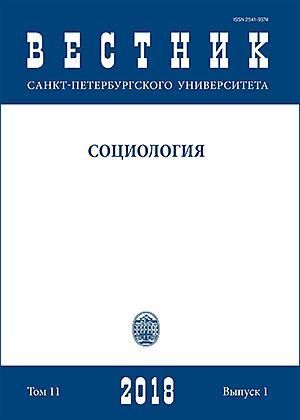Stereotypes of appearance in modern children’s Russian animation
DOI:
https://doi.org/10.21638/11701/spbu12.2018.111Abstract
This paper represents works of Russian animation as a source of social discrimination, namely as a mean of reproducing stereotypes about appearance. In the study, two hypotheses are tested, the first of which is that repetitive stereotyped links “appearance-character traits” can be identified in animated films. We assume that there is a set of visual markers that characterize the appearance of the animated characters, while heroes that are externally labeled in a certain way are assigned specific character traits according to the script. The second hypothesis contains the assumption that the “patterned” external images of characters can be associated with a certain set of situations in which this character acts. Three modern Russian animated series (“Smeshariki”, “Barboskiny”, “Belka i Strelka. Ozornaya semeyka”) are analysed. In the first part of the empirical study, the appearance of the characters is compared with their character, and as a result, the main types for these cartoons are determined. In the second part, the relationship between the type of the hero and the list of topics in the context of which he arises is explored. Analyzing and comparing features of the external appearance of characters and their specific traits, it was possible to find stable types: the hero, the character-girl, the clever, the beauty, the villain. The actions of such heroes are limited to plots reproducing social stereotypes, above all, about leadership, beauty, intellect, gender. Such a repetition of topics in which characters are interviewed makes it possible to say that replicating stereotypes about appearance is not a simple deliberate choice of multipliers, but a hidden reproduction of stereotypes circulating in modern Russian society.
Keywords:
discrimination on appearance, lookism, children’s animation, stereotypes
Downloads
References
References
Downloads
Published
How to Cite
Issue
Section
License
Articles of "Vestnik of Saint Petersburg University. Sociology" are open access distributed under the terms of the License Agreement with Saint Petersburg State University, which permits to the authors unrestricted distribution and self-archiving free of charge.




